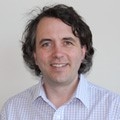There is a demand for highly-skilled professionals in the environmental and geoscience sectors, who can be innovative, creative and particular skills in advanced 3D spatial analysis, multi-disciplinarity, data management and informatics, mathematical and numerical skills, fieldwork and observations skills, earth observation and image analysis. The aim of this project is to help students develop these key skills through a trans-European cooperation between 13 academic, research and industrial institutions in the UK, Greece, Italy and France.
Funded by Erasmus+, the project will focus on the use and integration of terrestrial remotely piloted airborne systems (drone) imagery and submarine remotely operated vehicle data for the combined study of geohazards in terrestrial and marine environments, through a programme of data sharing, scientific and technical collaboration and ultimately curriculum development at postgraduate level to help students develop advanced skills in these areas. The aim of the project is to develop a series of very high resolution 3D virtual reality models of geohazards observed in the onshore and offshore environment using data acquired from airborne drone and submersible platforms that can be used in classrooms to teach about onshore and offshore environments as a continuum.
To facilitate this, the project aims to develop a series of toolkits to allow students to navigate these environments using virtual reality headsets, map and measure features on the ground surface and seabed to simulate real field mapping activities; and then export features they have identified for further analysis in other software such as Geographical Information Systems (GIS).
Our project will create a digital platform where terrestrial and seafloor data and virtual reality visualisation tools will be openly distributed to allow for the processing and visualisation of terrestrial and seafloor environment focused on natural hazards. The project will deliver teaching toolkits to partner the data, to develop firstly, observational and mapping skills (in the terrestrial and submarine environments) and secondly, a critical understanding of differences between geohazards in terrestrial and seafloor environments.
From this, we will present a curriculum design that can form a framework for environmental and geoscience postgraduate course provision and training across Europe to tackle the skills shortage in environment and geoscience sectors.

Project members at the University of Portsmouth

Dr Malcolm Whitworth
Project outputs
-
Antoniou, V., Bonali, F., Nomikou, P., ,Tibaldi, A., Melissinos, P., Mariotto, F. Vitello, F., Krokos, M. and Whitworth, M. (2020), Applied Sciences, 10(23), 8317.
-
Real world-based immersive Virtual Reality for research, teaching and communication in volcanology
Tibaldi, A., Bonali, F. L., Vitello, F., Becciani, U., Krokos, M., Nomikou E., Delage, E., Van Wyk de Vries, B. and Whitworth, M. (2020), Bulletin of Volcanology 38.
